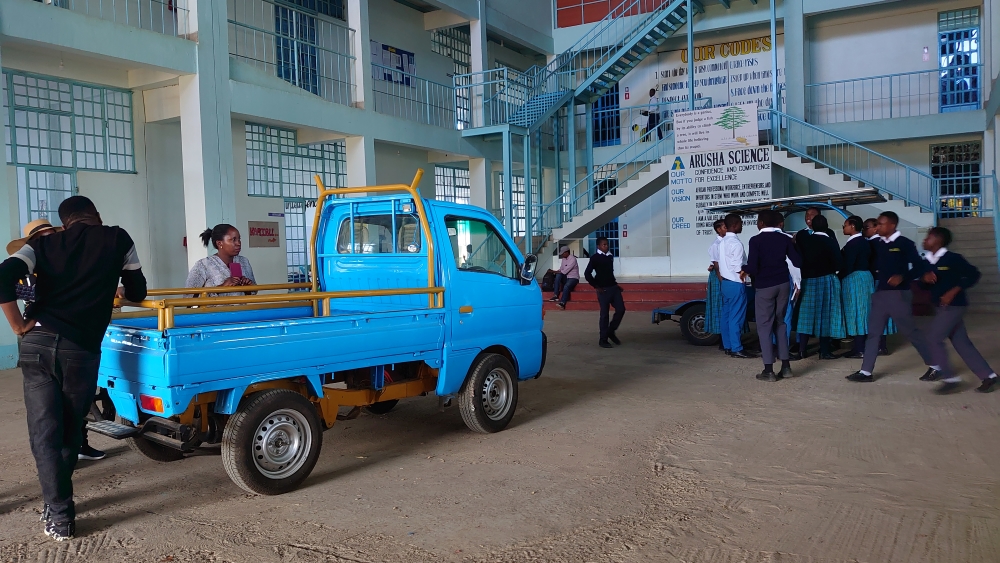Arusha Science Students devise electric car which can finally be charged using ordinary wall sockets at home
The Most challenging thing about electric cars at the moment should be the charging stations which seem to be almost lacking in Tanzania, thus discouraging most people from shifting to engine-less vehicles.
However this is now changing because students at the Arusha Science Secondary School have come up with a new electric car system which allows the vehicles to be charged from any domestic power outlet using ordinary three-pin AC or DC plug receptacles and wall sockets.
To demonstrate that, the clever students of Arusha have converted a one-ton pickup truck into an electric vehicle which can be charged at home, pub or anywhere where there are power sockets.
In fact, the truck can even be charged remotely using large power banks, available in shops, quite a revolution.
“Our students are working to make things easier for people planning to convert into green transportation,” explained Mwalimu Godlisten Lema.
Lema is the Arusha Science teacher who heads the Science, Technology, Engineering, and Mathematics (STEM), department of Information Communication Technology (ICT) at the Oljoro-based institution.
“From a single charge, which takes an average of six hours to juice up the lithium-ion battery which powers the electric motor,” added Michael Pendaeli Sikawa, one of the students undertaking the electric car project through the ‘Science into Use’ (SITU), initiative.
Another student, Diana Onesmo, boasted that the Arusha Science devised vehicle can travel over 70 kilometers, or more if not loaded at the modest speed of 80 kilometers per hour in total silence.
This is the second clean energy car that the Arusha Science students have built.
The first, which was also a pickup truck, is a solar powered, tesla-shaped vehicle produced in 2022, and the car is still running to date, needing no maintenance.
“This electric car system is still in the development stage in that it currently applies to mini truck vehicles with a rear wheel drive set up and manual steering system,” revealed Innocent Samuel Mtei, who is also an Arusha Science student.
The system can be fitted in vehicles such as Suzuki Every, Honda Acty, Daihatsu Hijet, Mazda Porter Cab, Subaru Sambar, Isuzu mini truck, Tata Super Ace Mint Mini Truck and Nissan NT100/NV100 Clipper and their vans equivalents.
For the prototype however the students in Arusha have used a 1994 model of Suzuki Carry truck which they stripped off its engine, replacing with an electric motor. They also ditched the gear box.

The blue colored truck moves very smoothly, being much lighter and silent, but still lugs heavy cargo and climbs hills with ease.
The fact that the electric motor is perched directly onto the rear axle next to the differential hub, it powers the wheels directly reducing the possibility of the car getting stuck in sand or mud.
As for the student, they advise that, if one happens to have an old pickup truck with a dead engine, they should not throw them away or turn the cars into scrap but rather take them to Arusha science where they can be given new lease of life to become clean and greener form of transportation.

